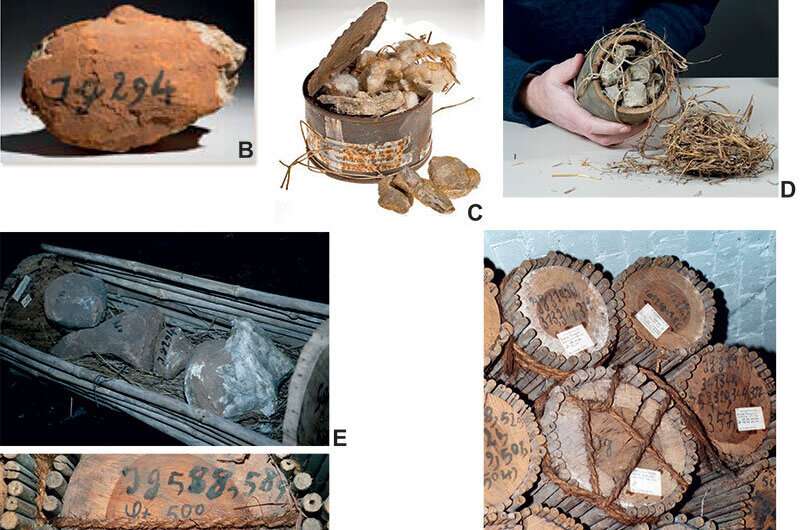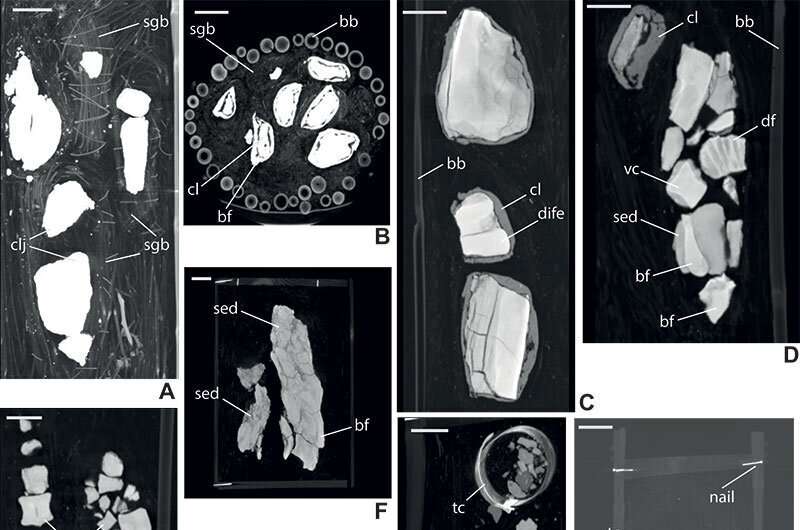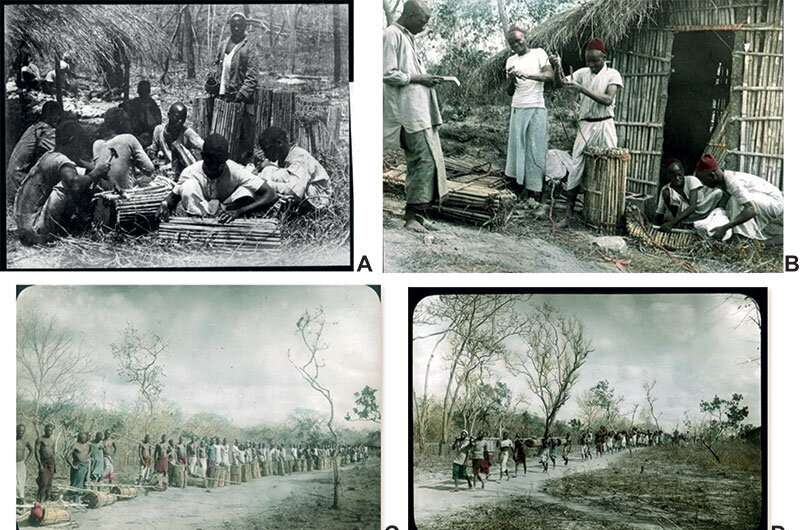This article has been reviewed according to Science X's editorial process and policies. Editors have highlighted the following attributes while ensuring the content's credibility:
fact-checked
peer-reviewed publication
proofread
Contents of containers of fossils from 1909 expedition reconstructed nondestructively

Between 1909 and 1913, the Museum für Naturkunde Berlin organized and financed the German Tendaguru Expedition (GTE) to southern Tanzania, at that time still the German colony of Deutsch-Ostafrika. With the participation of more than 500 local African excavation workers, a large number of porters, and two Berlin scientists, a total of more than 230 tons of fossil dinosaur material was taken to Berlin.
The dinosaur material originating from Tendaguru proved to be so rich and spectacular that the site remains one of the most important dinosaur localities in the world today. Of the dinosaur material from Tendaguru, 40 original packed and unopened bamboo corsets and six wooden crates with unprepared bones are still in the vertebrate collection of the MfN—their exact contents are unknown thus far. This work is part of a large interdisciplinary scientific program in which the Museum für Naturkunde Berlin deals with its colonial past.

Using their high-quality medical CT scanners, colleagues from IZW and Charité now helped to analyze the contents of the shipping containers non-destructively. "It was very exciting for all of us to finally know exactly what was inside the bamboo corsets without having to open them right away," says Daniela Schwarz, head of the study. "Until now, there was a lot of uncertainty about how to handle this material, because physical preparation really takes a lot of time, and you also don't want to destroy historical documents of the era."
The virtual preparation revealed many individual bones from the small gazelle dinosaur Dysalotosaurus lettowvorbecki, but also some pieces of the spiked dinosaur Kentrosaurus and of sauropods. In addition, this method allowed for accurate documentation of already familiar excavation techniques: embedding bones in clay, collecting these many small vertebral bones, collecting small bones in tin cans in the field, and carrying whole pieces of rock in specially made bamboo corsets stuffed with savanna grass.

All of this work was done by local workers employed during the GTE, and the filled corsets were then carried to the coast during several days of foot marches by columns of porters. "Two aspects were particularly important to me in the virtual exploitation of this material," explains Schwarz.
"On the one hand, we want to make the fossil material from Tendaguru virtually available to everyone in perspective, and on the other hand, it was important to be able to define priorities for the preparation and at the same time decide what should be preserved in its original state as a valuable contemporary testimony of this historic expedition under colonial conditions." The work shows that it is possible to combine the two.
The study is published in the journal Palaeontologia Electronica.
More information: Daniela Schwarz et al, Description of content of unopened bamboo corsets and crates from Quarry Ig/WJ of the Tendaguru locality (Late Jurassic, Tanzania, East Africa) as revealed by medical CT data and the potential of this data under paleontological and historical aspects, Palaeontologia Electronica (2023). DOI: 10.26879/1231. palaeo-electronica.org/content … rsets-from-tendaguru
Journal information: Palaeontologia electronica
Provided by Museum für Naturkunde - Leibniz-Institut für Evolutions- und Biodiversitätsforschung




















